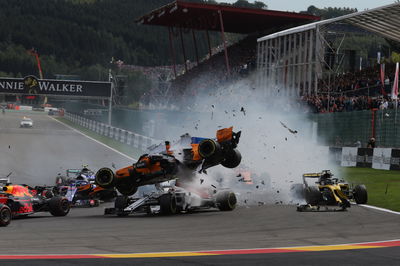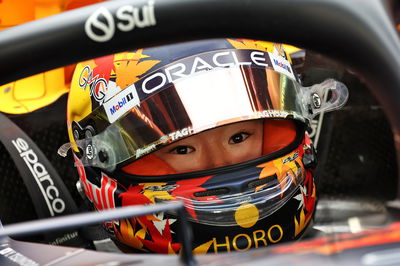Race Analysis: How Ferrari's power play sent Vettel to victory
Raw statistics and results can often be misleading, particularly in Formula 1.
Take the title race for example. Lewis Hamilton may have entered the summer break with a healthy 24-point lead over Ferrari rival Sebastian Vettel, but few would have made him the strong favourite for this year’s drivers’ title.
Ferrari’s pace in the races leading up to Spa had been good, even if the results were rather underwhelming, leaving Hamilton far from comfortable heading into the Belgian Grand Prix weekend.
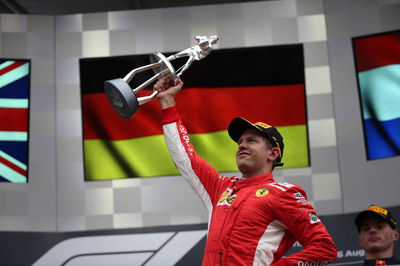
Raw statistics and results can often be misleading, particularly in Formula 1.
Take the title race for example. Lewis Hamilton may have entered the summer break with a healthy 24-point lead over Ferrari rival Sebastian Vettel, but few would have made him the strong favourite for this year’s drivers’ title.
Ferrari’s pace in the races leading up to Spa had been good, even if the results were rather underwhelming, leaving Hamilton far from comfortable heading into the Belgian Grand Prix weekend.
While Hamilton may have been able to again capitalise on wet conditions to grab pole on Saturday, much as he did in Hungary, the race turned out to be a different story. For the first time in seven weeks, Ferrari had made good on its pace and captured a well-earned victory.
Talk over Ferrari’s engine strength and straight-line speed advantage was rife in the lead-up to the weekend at Spa, given its power-hungry nature. Silverstone had been a taster that Ferrari was the team to beat on that front now, but at Spa, we finally got all the proof we needed.
Once Vettel had kept wide at Turn 1 before sharply turning in his Ferrari and put his right foot down, the win was his to take. A blast up the hill to Eau Rouge and Raidillon (appeasing WTF1’s fan club), tuck into the slipstream of Hamilton, move to the inside, and bam - Vettel was in front. Ferrari’s engine might was clear to see.
“It’s just power,” Hamilton said after the race. “They’re able to deploy more, somehow, than us, from Turn 1 to Eau Rouge, and then it carries on down the straight. And it’s the same down the back straight. I’m not really sure how but that’s how they are.”
Hamilton’s mention of “a few trick things” on Ferrari’s car led to questions as to whether he was bringing the legality of the SF71H into doubt, but the Briton stressed he wasn’t. It got people talking, nevertheless.
Back in the race itself, Vettel’s only real uneasy moment came on the restart following the Safety Car period to allow the mess at Turn 1 to be cleared following the multi-car collision. By his own admission, it was one of Vettel’s worst restarts as he failed to drop Hamilton through Blanchimont. Hamilton locked up coming into the chicane, though, allowing Vettel to skip clear.
“I focused on the last corner, the last pair and that worked really well plus Turn 1 where we had some tail wind the whole race so I was making sure I knew where the wind was going and again, got it really right and had a great exit,” Vettel explained.
“Once I was told the gap, which was around 0.9s exit of turn one, I knew that I should be safe but then you never know with a little bit of headwind up that long straight and obviously looked in the mirror, tried to see him when I could and saw that he wasn’t a threat so I was happy when I went into Turn 5 and stayed ahead.”
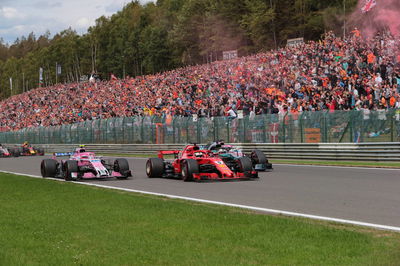
“I probably could have gone up the inside into the last corner, maybe, just about, but again, they would just overtake us on the straight,” Hamilton added.
“So I held back and tried to stay close but he just pulled away out of the last corner and then through turn one they’ve been quicker than us all weekend there and out of it so by the time I came out of Turn 1, he was quite far ahead.”
Hamilton’s final chance came when Mercedes tried to get the undercut on Vettel, bringing Hamilton in at the end of Lap 21. Vettel followed suit one lap later, narrowly coming out of the pits ahead of Max Verstappen, who had Hamilton on his tail. Had Vettel been sandwiched between the pair, Hamilton would have had a golden opportunity. Alas, from that point on, the race was always in the bag for Vettel, particularly as Ferrari’s strength and easier management on the softer compound tyres shone through, with Mercedes struggling with blistering.
This wasn’t like 12 months ago, where Vettel got a sniff of victory before Hamilton’s superb defence and stronger engine grunt allowed him to hold on. This time around, it really seemed as though Ferrari simply had the power unit to beat.
“I hope we have more power,” Vettel said. “That’s what we’re working for. If that’s the case then obviously well done to our engine guys.
“I think we’ve been making progress, especially the last two years, so, that’s good news. I think this feels pretty straightforward. We ran a little bit less wing, were faster in sector one, sector three and sector two was a little bit slower.
“But I wouldn’t disagree that this year in terms of power we are a lot closer than we were last year. I think last year we didn’t have a chance here, despite maybe running less wing – or more wing. It’s good to see that we’re making progress.”
For Hamilton, it was a worrying disappointment: even with Mercedes’ third and final spec power unit upgrade for this season, the team still trailed Ferrari.
“Every time we do bring an upgrade, they bring a bigger one,” Hamilton said. “We knew they were quick on the straights. They were quicker, particularly in qualifying in the last sector.
“We’ve known for the last four races or so that they’ve had some things on their car that’s enabled them to be quicker on the straights. We’ve just got to work harder, I guess.”
Mercedes boss Toto Wolff echoed Hamilton’s thoughts. He identified the team’s tyre management issues and struggles exiting slow-speed corners as being big concerns - but did not downplay Ferrari’s power advantage.
“They have a power advantage,” Wolff said. “We have seen that yesterday in qualifying, that power advantage is at various parts of the straights. You can see even at the exits, are not worse than ours. The engine keeps pulling.”
Also benefitting from the updated Ferrari power unit was its customer teams, Haas and Sauber. All four Ferrari-powered cars that saw the finish at Spa were in the points, with Romain Grosjean and Kevin Magnussen taking P7 and P8 for Haas, and Marcus Ericsson grabbing P10.
Haas team boss Gunther Steiner was coy on the idea of Ferrari’s power unit now being the one to beat, simply saying: “I think it’s good for Formula 1 that someone else is on top, because Mercedes was on top for four years.”
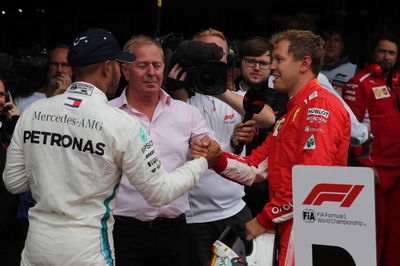
Mercedes is now in a difficult spot. Hamilton may lead the drivers’ championship by 17 points, and the team may be sitting 15 clear of Ferrari in the constructors’, but it has lost its pace advantage. The power muscle it could rely on at tracks like Monza last year, where it turned the engines down after just five laps and still scored a one-two, isn’t there as a safety net anymore. There are no guaranteed wins as there perhaps were in the first four years of the V6 hybrid era.
Spa may not have been the true turning point in the F1 title race, but it’s the first track where we’ve really seen Vettel look a step clear of Hamilton. It could be where the tide turned.
But Mercedes hasn’t won four championship doubles on the trot on engine power alone. The team was facing a huge challenge this time last year, and came out with both titles clinched early.
The fight now is to respond to the fresh challenge from Maranello, perhaps writing off Monza next weekend, and then rally come the flyaways.
